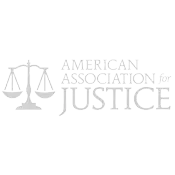Passengers Not Wearing Seatbelts May Have to Share Blame if Injured in an Accident
Disla v. Blanco, 4D11-2556, 2013 WL 3811805 (Fla. Dist. Ct. App. July 24, 2013)
This auto accident case involves a person losing control of their vehicle after suffering a seizure. The plaintiff in this case was a passenger in the vehicle who suffered personal injuries as a result of the collision.
The defendant in this lawsuit, Joseph Blanco, was driving the plaintiff home one evening. While operating his vehicle, Blanco suffered a seizure causing him to lose control. During the episode, Blanco’s car ran over two different curbs, side-swiped a tree, and ran into someone’s home. The plaintiff sustained a broken neck as a result of the impact. To repair her broken neck, the plaintiff underwent a surgical procedure to fuse back together her neck. With the advice of her lawyer, the plaintiff in this case sought pain management from a medical specialist. Ultimately, she needed to have a second procedure done on her neck which included an additional fusion of the spine.
At the trial, issues were presented to the court regarding the defendant’s negligence in the accident; the plaintiff’s comparative negligence by not having her seatbelt on at the time of the accident; and whether or not the medical treatment that the plaintiff underwent and continues to go through, was and is reasonably necessary.
It was determined that the defendant had no previous knowledge of any existing medical condition pertaining to seizures. Drivers in Florida are required to exercise reasonable care when handling a motor vehicle. Had it been shown that the defendant had a history of seizures, a jury could have found him to be negligent in operating the vehicle because he was aware of the potential harm that he was creating by driving the vehicle. In this case, the defendant had never had a previous seizure and the court determined that he was not negligent with that regard.
When the verdict returned from the jury, it was determined that the plaintiff was ninety percent responsible for her injuries because she was not wearing her seatbelt. The defendant was held to be ten percent liable to the plaintiff for her injuries, and of the over two-hundred thousand dollars in damages being sought by the plaintiff, just over ten thousand dollars was assigned to be paid by the defendant.
Though the plaintiff in this case won the lawsuit, and received an award for damages and costs, it was not what she ultimately looking for from the case. In Florida, a theory of comparative negligence is used in auto accident cases. When a person contributes, even partly, to causing their injuries, a defendant can present evidence to show that the amount of damages should be reduced by the plaintiff’s percentage of liability. A jury decides on what percentage of liability to assign each party. Then a total calculation of the damages is computed, subtracting what percentage of fault is assigned to the plaintiff.
Read more





